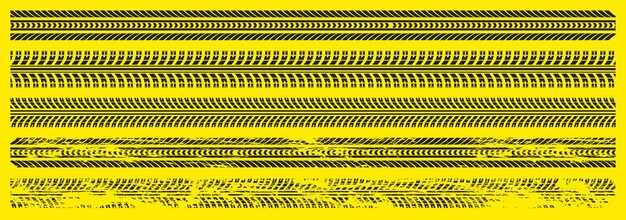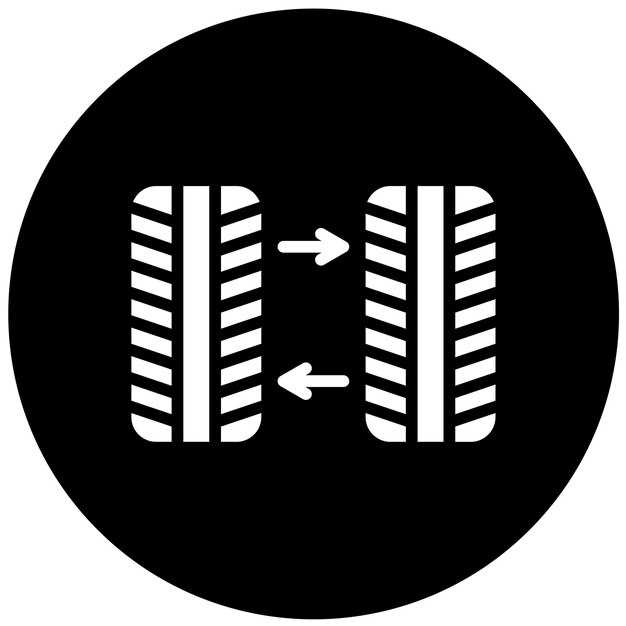
Tires are a crucial component of any vehicle, directly impacting both safety and performance. Monitoring tire wear patterns is essential for optimizing the lifespan of your tires and ensuring a smooth driving experience. By understanding how your tires wear, you can prevent potential issues, enhance the vehicle’s handling, and ultimately save on replacement costs.
One of the key factors contributing to tire wear is alignment. Proper wheel alignment ensures that the tires make optimal contact with the road, allowing for even distribution of wear across the tread surface. Misalignment can lead to uneven tire wear, affecting vehicle stability and increasing the likelihood of blowouts. Recognizing the signs of misalignment early can help you maintain not just your tires but your vehicle as a whole.
In this article, we will explore various tire wear patterns that can arise from different driving conditions, alignment issues, and maintenance practices. By gaining insights into these patterns, you’ll be equipped to make informed decisions regarding tire maintenance and vehicle care, ultimately enhancing your driving experience.
Identifying Common Tire Wear Patterns

Understanding tire wear patterns is essential for maintaining your vehicle’s performance and safety. Various wear patterns can indicate specific issues affecting your tires, and recognizing these patterns can help you address problems promptly.
Here are some common tire wear patterns to look out for:
- Uneven Wear: This occurs when one side of the tire wears down faster than the other. It may indicate issues such as misalignment or improper inflation.
- Cupping: This pattern features a wavy appearance along the tread and is usually caused by loose suspension components, which can lead to vibrations and road noise.
- Center Wear: When the tread in the center of the tire wears more than the edges, it often signifies over-inflation. Drivers should regularly check tire pressure to avoid this issue.
- Edge Wear: Excessive wear on the outer edges of the tire typically points to under-inflation or excessive camber angle. Maintaining appropriate tire pressure can help mitigate this pattern.
- Flat Spots: These appear as shiny, flat areas on the tire surface, often caused by sudden braking or locking up. Regular tire maintenance can help reduce the likelihood of flat spots.
- Sidewall Damage: This isn’t a wear pattern per se but can indicate significant issues. Bulges, cuts, or cracking along the sidewall can lead to blowouts and require immediate attention.
Identifying these tire wear patterns early can significantly improve your vehicle’s safety and longevity. Regular inspections and timely maintenance are key to ensuring optimal tire health.
Factors Influencing Tire Wear Rate
Tire wear rate is significantly influenced by several critical factors that, when addressed properly, can enhance the durability and performance of tires. Understanding these factors is essential for effective maintenance and prolonging the lifespan of your tires.
1. Alignment: Proper wheel alignment is crucial in ensuring that tires wear evenly. Misalignment can lead to uneven tire wear, causing certain areas to wear out faster than others. If the wheels are not aligned correctly, they may push against the road at incorrect angles, leading to increased friction and wear. Regular checks and adjustments of your vehicle’s alignment are necessary to promote even tire wear.
2. Tire Pressure: Maintaining the correct tire pressure is vital to prevent excessive wear. Under-inflated tires increase the contact area with the road, resulting in heightened wear and decreased fuel efficiency. Conversely, over-inflated tires can lead to unnecessary wear in the center of the tread. Regularly checking and adjusting tire pressure according to manufacturer recommendations can mitigate these issues.
3. Driving Habits: Aggressive driving, such as rapid acceleration, hard braking, and taking sharp turns, can contribute to increased tire wear. Smooth and steady driving contributes to a reduction in wear. Being mindful of driving habits can significantly extend the life of your tires.
4. Load Distribution: The weight distribution across the tires can also influence wear. Overloading a vehicle causes tires to wear unevenly. Ensuring that the load is evenly distributed and adhering to the manufacturer’s load limits can help in managing wear effectively.
5. Road Conditions: The type of roads frequently driven on plays a role in tire wear. Rough, uneven, or poorly maintained roads can exacerbate wear compared to smooth highways. Being aware of the conditions can help drivers adjust their maintenance strategies accordingly.
6. Tire Quality: The quality of the tires themselves can greatly affect wear rates. Higher-quality tires often incorporate advanced rubber compounds and tread designs that provide improved wear resistance. Selecting reputable brands and models based on driving needs can enhance tire longevity.
By understanding and addressing these factors, vehicle owners can take proactive steps to manage tire wear effectively, ensuring both safety and performance on the road.
Role of Vehicle Alignment in Tire Longevity
Proper alignment is crucial for enhancing the lifespan of your tires. When a vehicle’s wheels are correctly aligned, they make contact with the road evenly, which prevents uneven wear patterns. Misalignment can lead to excessive wear on specific areas of the tire, reducing its overall life and necessitating premature replacement.
Moreover, misaligned wheels can cause increased rolling resistance. This not only affects tire longevity but also impacts fuel efficiency, as the engine has to work harder to maintain speed. Therefore, addressing alignment issues promptly can save money in the long run by extending the life of the tires and improving fuel economy.
Regular alignment checks are essential, especially if you notice your vehicle pulling to one side or if your tires show signs of uneven wear. Keeping your alignment in check enhances driving stability and safety. Additionally, ensuring that the vehicle is properly aligned can help maintain consistent performance characteristics, providing a smoother and more controlled driving experience.
In conclusion, vehicle alignment plays a pivotal role in maximizing tire longevity. By keeping your wheels aligned, you not only extend the lifespan of your tires but also contribute to overall vehicle performance and safety.
How to Diagnose Alignment Issues Through Tire Wear

Understanding the relationship between tire wear and vehicle alignment is crucial for maintaining optimal performance and safety. Misalignment occurs when a vehicle’s wheels are not set to the correct angles, leading to uneven wear on tires. By examining the wear patterns on your tires, you can identify alignment issues early and take corrective measures.
Common signs of alignment problems include uneven wear across the tire surface. For instance, if the inner or outer edge of the tire shows significant wear while the center appears relatively new, this may indicate a misalignment. Specifically, excessive wear on the inner edges often suggests that the wheels are toe-in, while wear on the outer edges typically points to toe-out issues.
Another pattern to observe is feathering, where the tread becomes smooth on one side and rough on the other. This can signal that the wheels are not parallel and need adjustment. It’s also important to consider the tire’s overall condition; if one tire wears more quickly than the others, this could further point to alignment discrepancies.
Regularly rotating your tires can help mitigate uneven wear, but if you notice persistent issues despite rotations, it’s a clear indication of a potential alignment problem. In such cases, having a professional alignment check is recommended to prevent damage to the tires and ensure driving safety.
In summary, diagnosing alignment issues through tire wear involves observing the patterns and analyzing any irregularities. Maintaining proper alignment not only extends tire life but also enhances overall vehicle performance.
Tips for Regular Tire Maintenance and Care
Regular tire maintenance is crucial for ensuring safety, improving fuel efficiency, and extending the lifespan of your tires. By following these tips, you can keep your tires in top condition and mitigate uneven wear patterns.
1. Check Tire Pressure: Maintain the recommended tire pressure as specified by the manufacturer. Under-inflated tires can lead to excessive wear on the outer edges, while over-inflated tires can wear down the center more quickly.
2. Regular Tire Rotation: Rotate your tires at least every 5,000 to 7,500 miles. This practice helps to ensure that all tires wear evenly. Different positions on your vehicle experience varying levels of stress and wear, and rotation balances this out.
3. Alignment Checks: Regularly check the alignment of your tires. Poor alignment can lead to uneven wear and can compromise handling. It is advisable to have your alignment checked when you notice the vehicle pulling to one side or after hitting a pothole or curb.
4. Visual Inspections: Frequently inspect your tires for visible signs of wear, such as cracks, bulges, or embedded debris. Addressing these issues early can prevent more serious problems down the road.
5. Balance Tires: Ensure your tires are balanced properly. Uneven weight distribution can cause vibrations and lead to uneven tire wear, particularly on the inner or outer edges.
6. Maintain Tread Depth: Ensure your tires have adequate tread depth. Use the penny test; if you can see all of Lincoln’s head, it’s time to replace your tires. Adequate tread helps with traction and promotes better handling.
7. Maintain Proper Load: Overloading your vehicle can put unnecessary stress on your tires and lead to faster wear, especially on the sides. Always adhere to the load specifications provided by the manufacturer.
| Maintenance Task | Frequency |
|---|---|
| Tire Pressure Check | Monthly |
| Tire Rotation | Every 5,000 – 7,500 miles |
| Alignment Check | Every 6 months or as needed |
| Tread Depth Check | Monthly |
By following these regular maintenance tips, you can ensure your tires remain in optimal condition, enhancing your vehicle’s performance and safety.
When to Replace Tires Based on Wear Patterns
Understanding tire wear patterns is crucial for maintaining your vehicle’s performance and safety. Observing and interpreting these patterns can help you determine the right time to replace your tires. The earlier you address wear issues, the safer and more efficient your driving experience will be.
One of the key indicators for replacing tires is uneven wear. If you notice that the tread is worn more on one side than the other, it may be due to improper alignment or inflation issues. This uneven wear can lead to reduced traction and increased risk of tire failure. If the tread variance is significant, it’s advisable to replace the tire to ensure optimal performance and safety.
Another common wear pattern is the formation of bald spots. This indicates that a portion of the tire has lost its tread completely, exposing the underlying rubber. Driving on bald tires significantly increases the risk of hydroplaning and decreases braking efficiency. If you observe any bald areas, it’s time to replace the tire immediately.
The appearance of tread wear indicators, small ridges built into the tire grooves, is also a sign that replacement is necessary. These indicators become flush with the tread surface when the tire is worn down to its legal limit, typically 2/32 of an inch. Once the wear indicators are visible, it is crucial to replace the tire to comply with safety standards.
If your tires are experiencing excessive wear in the center, this may indicate over-inflation. On the other hand, if the edges are more worn out, it suggests under-inflation. In both cases, it is critical to replace the tires when the tread depth is below safe levels to maintain handling and stability.
Regularly inspecting your tires every 6,000 to 8,000 miles can help you catch these wear patterns early. Keeping track of tread depth using a gauge can aid in making informed decisions about tire replacements. Remember, safety should always be your priority when it comes to tire maintenance.
